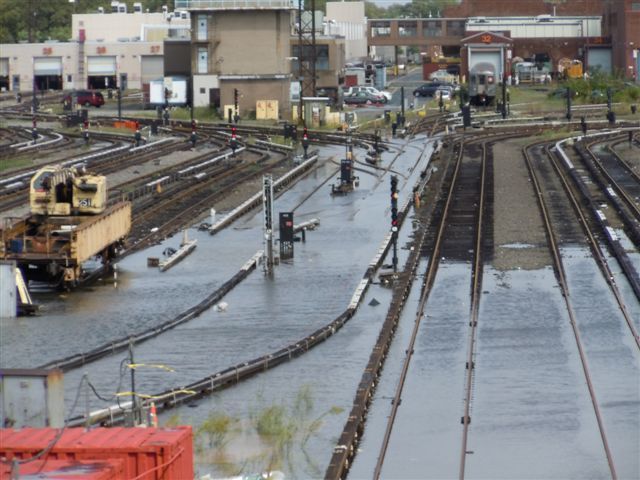MTA Makes The Right Decision To Shut Down The System

THE COMMUTE: The MTA, in an unprecedented move, shut down the entire mass transit system beginning at 12 noon on Saturday in anticipation of Hurricane Irene. Some may wonder why it was necessary to shut down the system so early. That is because it takes approximately eight hours to entirely shut it down when you consider that the entire Coney Island Yard, the largest subway yard in the world, as well as other low lying yards such as the 148th Street terminal had to have their subway cars evacuated by placing them in areas of the subway not prone to flooding.
Water removal from the subway system is a necessity, with pumps removing 13 million gallons of water daily because of the many underground streams beneath the surface of New York City. A hurricane increases that number dramatically. Buses from low-lying depots were also relocated.
Of course there was a downside. Some people with midnight shifts at hospitals or evacuation centers, for example, had to leave their homes 12 hours in advance in order to get to work. Then there is the economic impact for businesses that depend on mass transit for their customers.
However, the alternative of leaving the system operational, poses the risk of flooded buses or passengers stranded for hours in subway trains, as was the case this past winter, a situation the MTA desperately wanted to avoid again. It is also much easier to get the system up and running once the storm is over, after a complete shutdown with all the equipment in safe locations and undamaged.
It takes much longer, however, to bring it back up than to shut it down because every foot of track has to inspected for debris, which has the potential to cause an accident. The integrity of elevated structures must be checked as well. Water has to be pumped out of flooded areas, and trains have to first be moved back to the yards before being placed back in service. Also, any open cut, such as the Brighton and Sea Beach lines, where trees may have fallen, have to be cleared.
It is easier to get the buses back in service and that process began on a staged basis on Sunday at about 4 p.m. The subways started resuming at 6 a.m., but full service could not be restored by the Monday morning rush hour.
Historical Perspective
A decision to keep the buses and trains in service throughout the storm could have resulted in damage to buildings and equipment. That was the case on December 12, 1992 when a Nor’easter hit New York City. At that time, the MTA was lucky and purchased hazard insurance protection just weeks before that storm. The losses were recouped by insurance and FEMA. However, after that incident, the insurance companies removed rainstorms from the coverage.
A second claim was made after the first World Trade Center bombing in 1992. The blizzard of January 7–8 1996 also resulted in the MTA recouping $8 million from the same sources. (Further snow events were no longer covered.) A payment of $30 million for extra costs and damage was paid to all the MTA agencies after 9-11. That payment resulted in acts of terrorism being removed from the policy. Several smaller claims were also paid for derailments and the blackout of August 14, 2003. My staff and I assembled all those insurance claims.
It may still be possible for the MTA to recoup from FEMA some of the expenses of shutting down and bringing the system back up as Protective Measures to avoid damage, if a claim is submitted.
Conclusion
As a Monday morning quarterback, it is easy to say that the MTA decided to close the system too early and could have waited another few hours until 5 p.m. when residents of Zone A were required to evacuate. Perhaps that would be correct, but at the time the MTA made the decision at 8 a.m. to begin closing down at noon, the hurricane — which was later downgraded to a tropical storm — was due to hit New York City around 8 p.m. It arrived later.
As it turned out, we were very lucky and much of the predicted doom and gloom did not materialize. However, when you are dealing with large numbers of people, it is always better to be safe than sorry. The MTA performed well this time.
The Commute is a weekly feature highlighting news and information about the city’s mass transit system and transportation infrastructure. It is written by Allan Rosen, a Manhattan Beach resident and former Director of MTA/NYC Transit Bus Planning (1981).



